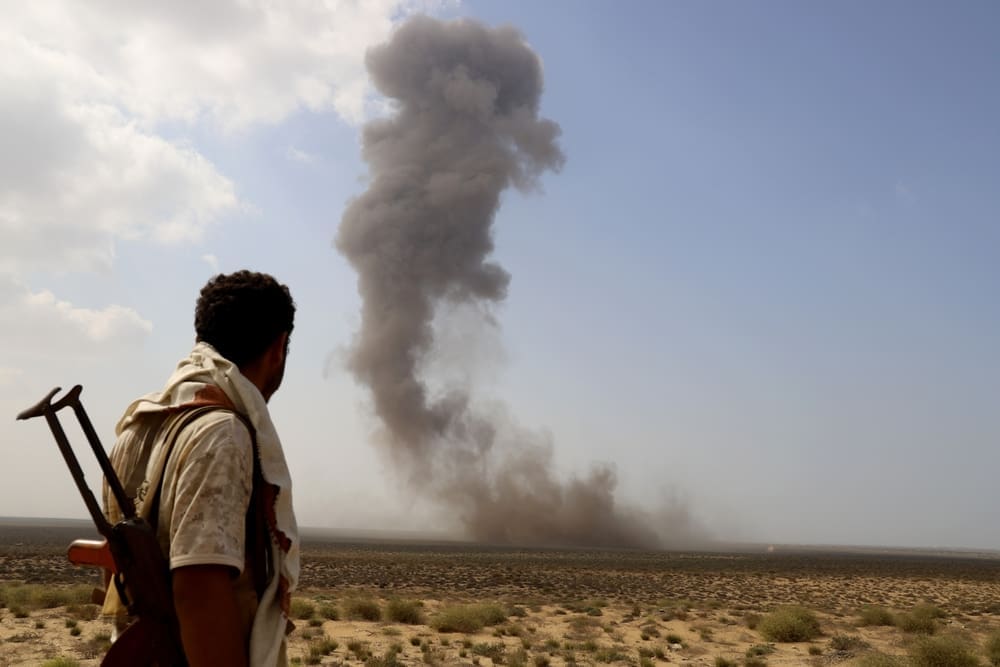At least two individuals were reported killed in overnight airstrikes carried out by the United States on Saada, a stronghold of Yemen’s Houthi rebels. The strikes, which also left nine others wounded, were highlighted by the Houthi’s al-Masirah satellite news channel. Footage broadcasted showed a strike causing the collapse of what appeared to be a two-story building, described as a solar power shop by the channel.
The recent escalation in airstrikes comes as President Donald Trump intensifies efforts against the Houthi rebels due to their attacks on shipping in Middle Eastern waters, actions connected to the ongoing Israel-Hamas conflict. The Houthis reported at least 69 fatalities from these airstrikes, though they have not confirmed any losses among their security and military leadership, a claim brought into question following an online video posted by Trump.
In a video released early Saturday, Trump shared drone footage purportedly showing over 70 people gathered, followed by an explosion leaving a large crater. He claimed the assembly was for planning attacks, asserting that the strike prevented future assaults on US ships. The US Central Command has not publicly released the video or provided specific details about the strikes, though the White House has stated over 200 strikes have been conducted against the Houthis since mid-March.
The rebel-controlled SABA news agency disputed US claims about targeting Houthi leaders, suggesting the airstrike hit a social gathering for Eid al-Fitr in the Hodeida governorate. The report argued that those present had no involvement with Houthi operations, which have been aimed at disrupting navigation of vessels associated with American and Israeli interests. Despite the report, the Houthis have not acknowledged such a high casualty strike in Hodeida during this period, and the SABA report did not categorize those killed as civilians, implying possible connections to Houthi military forces.
The Trump administration’s recent operations against the Houthis appear broader in scope compared to previous efforts under former President Joe Biden. The strategy has shifted from targeting launch sites to striking higher-ranking personnel and bombing urban areas. This change followed Houthi threats to renew attacks on “Israeli” ships in response to Israel’s blockade of aid to Gaza. From November 2023 to January 2024, the Houthis targeted over 100 merchant vessels, sinking two and causing four sailor deaths, as well as launching unsuccessful attacks on American warships.
The US campaign aims to pressure Iran, a supporter of the Houthis, amid concerns over Iran’s advancing nuclear program. With no indication of a halt, the airstrikes remain a critical component of the Trump administration’s strategy in the region.
Understanding the Impact
- The escalation of US airstrikes in Yemen could lead to increased regional instability, impacting global shipping routes and trade, particularly in the Middle Eastern waters.
- Residents in areas targeted by airstrikes may face heightened security risks and disruptions to daily life, including potential displacement and loss of infrastructure.
- The intensification of military operations could strain US relations with countries in the region, influencing diplomatic efforts and alliances.
- The ongoing conflict and airstrikes may exacerbate humanitarian crises in Yemen, affecting access to food, medical care, and other essential services.
- Global oil markets might experience fluctuations due to concerns over the safety of shipping lanes in the region, potentially impacting oil prices and economic stability worldwide.








